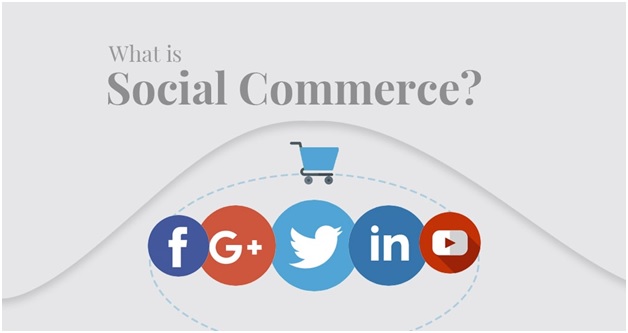In the rapidly evolving landscape of e-commerce, a new player has emerged, fundamentally changing the way we shop online – social commerce. It’s a term that’s been gaining significant attention in recent years, but what exactly is social commerce, and why is it reshaping the way businesses connect with consumers?


Defining Social Commerce
At its core, social commerce is the fusion of e-commerce and social media. It refers to the practice of using social media platforms to facilitate the buying and selling of products or services directly within the social ecosystem. In other words, e-commerce transactions integrated seamlessly into the social media experience.
To understand social commerce, let’s break it down into its primary components:
1. Social Media Platforms
The foundation of social commerce lies within the realms of social media platforms such as Facebook, Instagram, Pinterest, and Snapchat. These platforms have billions of active users, making them fertile ground for businesses to connect with potential customers.
2. Shopping Features
Social commerce leverages the various shopping features that these platforms offer. These features allow businesses to showcase their products or services within their social media profiles, creating a convenient and engaging shopping experience.
3. User-Generated Content
User-generated content plays a significant role in social commerce. It includes product reviews, ratings, comments, and even user-generated photos and videos showcasing products in action. This content adds authenticity and credibility to the products, influencing potential buyers.
4. Influencer Marketing
Influencers, individuals with a significant following on social media, often partner with brands to promote products or services. Their recommendations and endorsements can sway the purchasing decisions of their followers, making influencer marketing a powerful tool in social commerce.
How Does Social Commerce Work?
Now that we have a basic understanding of the components involved, let’s explore how social commerce works in practice:
Discovery: Users come across products or services either through organic posts from the brands they follow or through targeted ads that match their interests and demographics.
Engagement: Users can engage with the content by liking, sharing, or commenting on it. They can also click on product tags to learn more about the featured items.
Purchase: Social commerce enables users to make purchases directly within the social media platform. They can add products to their cart, choose product variants (like size or color), and complete the transaction without leaving the platform.
Social Interaction: After making a purchase, users may share their shopping experience or the products they bought with their followers, creating a loop of social interaction and potential sales.
Why Is Social Commerce Transforming E-Commerce?
Social commerce is disrupting traditional e-commerce in several ways:
1. Enhanced Shopping Experience
Social commerce platforms offer a more immersive and engaging shopping experience compared to traditional online stores. Users can see products in action, read reviews, and make purchases without navigating to external websites.
2. Trust and Authenticity
User-generated content and influencer endorsements build trust and authenticity. When potential buyers see others enjoying a product they’re interested in, they are more likely to make a purchase.
3. Mobile-Centric
Social media is primarily accessed via mobile devices, and social commerce is designed with mobile users in mind. This mobile-centric approach aligns with the preferences of many modern consumers.
4. Data-Driven Insights
Social commerce platforms provide businesses with rich data and analytics. Companies can gain valuable insights into customer behavior, preferences, and engagement, allowing for more targeted marketing and product offerings.
5. Expansion of Sales Channels
Social commerce expands businesses’ sales channels beyond their own websites and physical stores. This diversification can be especially beneficial in reaching new audiences and markets.
The Future of Social Commerce
As social commerce continues to evolve, we can expect several trends and developments to shape its future:
1. Augmented Reality (AR) Shopping
AR is set to play a significant role in social commerce. Users may be able to virtually try on products or see how they fit in their living spaces before making a purchase.
2. Chatbots and AI
AI-powered chatbots will provide real-time customer support and assist with product recommendations, further enhancing the shopping experience.
3. Integration with Messaging Apps
Integration with messaging apps like WhatsApp and Facebook Messenger will enable businesses to communicate directly with customers, answer inquiries, and even facilitate transactions.
4. Increased Personalization
Social commerce platforms will use AI and data analysis to deliver highly personalized shopping experiences, showing users products that align with their preferences and behavior.
Also Read: 6 Tips To Secure An E-commerce Website
Conclusion:
Social commerce represents a seismic shift in the way businesses approach online sales and marketing. It combines the power of social media’s vast user base, engaging content, and influencer marketing with the convenience of e-commerce transactions. As this trend continues to grow and evolve, businesses that embrace social commerce are likely to thrive in this dynamic and customer-centric digital landscape. So, whether you’re a business owner or a consumer, it’s time to pay attention to social commerce—it’s here to stay, and it’s changing the way we shop online.









